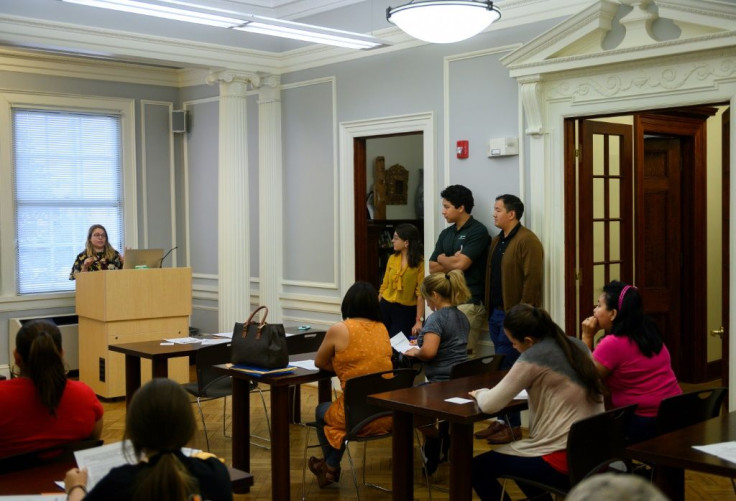Immigration News: Immigrants' Children Do Better Than Children Of Those Born In US, Study Says

The National Bureau of Economic Research reports that though the makeup of the U.S. immigrant population has changed in the last century, the upward mobility from generation to generation has not.
In a working paper issued in October but not yet peer-reviewed, researchers Ran Abramitzky of Stanford University, Leah Platt Boustan and Eliza Jacome of Princeton University, and Santiago Perez of the University of California at Davis conclude the children of immigrants from nearly every sending country have higher rates of upward mobility than the children of those born in the United States, and that’s just as true today as it was in past generations.
“In the past, this advantage can be explained by immigrants moving to areas with better prospects for their children and by ‘underplacement’ of the first generation in the income distribution. These findings are consistent with the ‘American Dream’ view that even poorer immigrants can improve their children’s prospects,” the researchers said.
Immigration is a hot topic politically and the Trump administration has cut immigration quotas drastically as Congress has struggled with immigration reform.
There were an estimated 44.5 million immigrants living in the United States as of 2017, 13.7% of the population, down from the historical record of 14.8% in 1890. Between 2016 and 2017, the immigrant population increased by 787,000, an increase of nearly 2%. Approximately 23% of immigrants are in the United States illegally.
The researchers found second-generation immigration growing up in families earning less than $30,000 annually were able to boost their incomes by $2,000 to $5,000 in current dollars even though immigration from Europe has given way to Latin America and Asia and the U.S. has gone from nearly open borders to severe restrictions on who is allowed in. Second-generation immigrants growing up in families earning $105,000 were able to boost their incomes $6,000 to $15,000 while the children of those born in the U.S. were able to boost their incomes by less than $2,000 to $6,000, depending on their families’ initial economic status, the researchers said, adding that educational attainment played a significant role.
Using census data, the researchers studied two groups of immigrants: Those who arrived before 1880 (mainly from northern and western Europe) through 1910 (mainly from southern and eastern Europe) and those who arrived around 1980, mainly from Latin America and Asia.
“Overall, we conclude that second-generation immigrants are on average more upwardly mobile than the sons of US-born individuals,” the researchers said. “This advantage is not driven by immigrants from countries with higher mean earning than the U.S.-born in the first generation: There is higher upward mobility even among immigrants from countries that start significantly below the US-born in the first generation. In both the past and present, sons of immigrants move out of the bottom of the income distribution at higher rates than the sons of U.S.-born parents.”
© Copyright IBTimes 2024. All rights reserved.






















